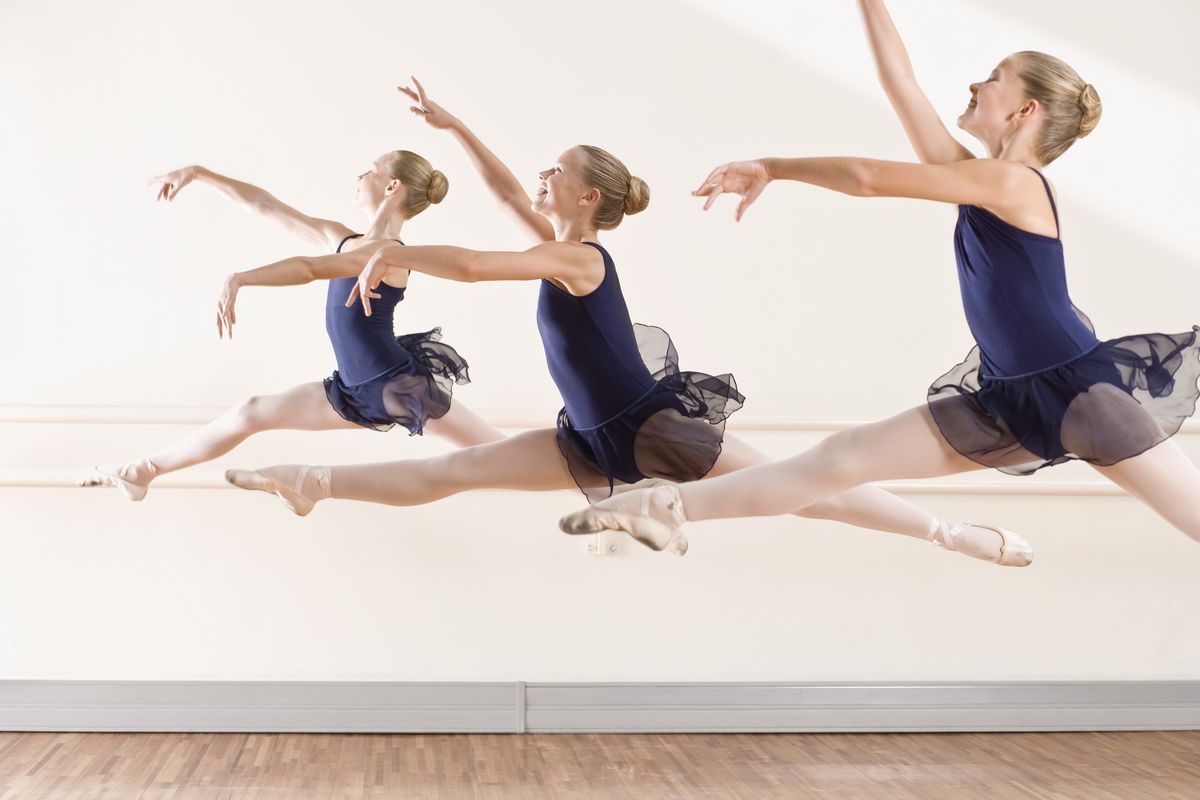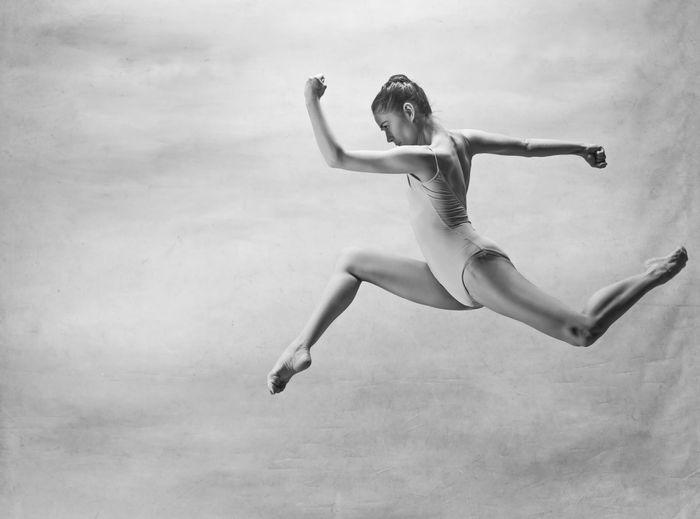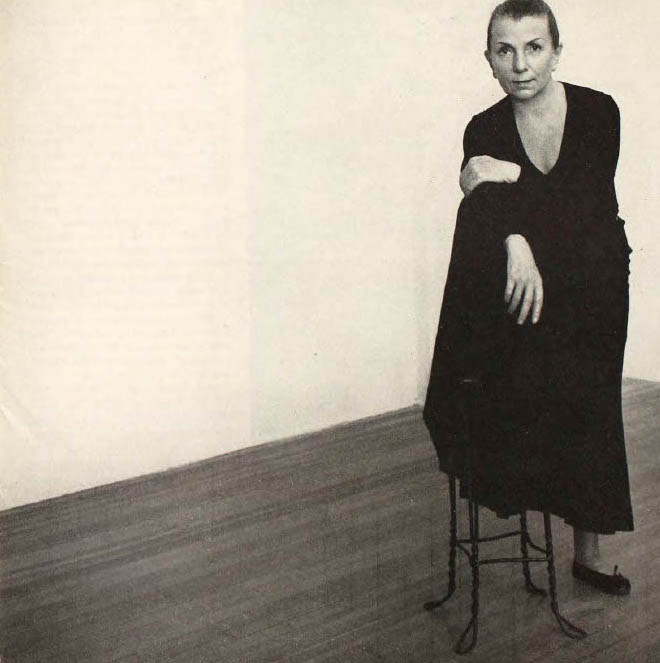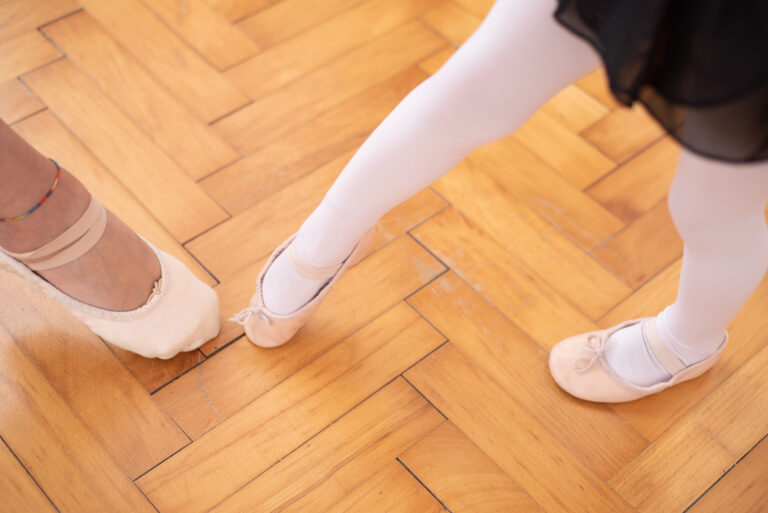
In flight, the most talented jumpers appear to be effortlessly suspended in mid-air. In actuality, every jump requires precision, technique and thought. Here, four experts weigh in on the essential building blocks of jumps and share teaching tips to help you explain them to students.
Understanding Plié
During the petite allegro section of an evening class at Peridance in New York City, Judy Rice enthusiastically repeats three words: “plié, plié, plié.” “The bottom line is that you need to take root to fly,” says the former Joffrey Ballet dancer, master ballet teacher and associate professor at the University of Michigan. “This generation undervalues the floor, so you really need to stress the importance of a luxurious plié if you want your students to jump well.”
Before attempting even a simple bounce, Rice stresses, the bookends before and after the movement are actually the most important components in producing height, power and safety. For example, a simple first-position sauté must be preceded by a deep bend in first position that includes “the integrity of an honest knee over the foot. It cannot wobble in back or in front, because that can lead to taking off and landing incorrectly,” she explains.
NYC physical therapist Rocky Bornstein, who specializes in working with dancers, agrees that hip-knee-foot alignment is of the utmost importance for proper jump execution—and injury prevention, especially when landing. Maintaining stable knees through hip control, she explains, allows the kneecap to line up between the second and third toes.
As a result, it’s key to remind dancers to concentrate on keeping the pelvis and spine neutral; arching or flexing can throw off the entire stack. “Most injuries occur when the body is landing, when the muscles have to lengthen and absorb the shock of the body’s mass against gravity,” says Bornstein. “The position of the foot, ankle and knee have to be biomechanically correct, with adequate strength and balance between the medial and lateral muscles that control rotation, as well as adequate lengthening of the shock-absorbing muscles.”

Thinkstock
To help students fully appreciate the value and strength of plié, Rice recommends this simple exercise: Have students lie on the floor with their feet pressed flat against a wall in a turned-out first position. The rest of the body should be straight, with arms down by the thighs. Ask them to plié, pushing off to straight legs while pretending that the wall is the floor. When they are propelled backward, they will understand the “height” they can achieve if they were to use the same amount of energy when standing. With the weight of gravity removed, muscle memory can be produced without other variables interfering.
“If you are having a hard time getting students involved, make it into a competition to see who can slide the farthest from the wall,” Rice adds. “Then, have them use that same energy when they stand. They will see that their legs automatically stretch after a good plié. You have to go down to go up!”
Mary Carpenter, a ballet teacher at NYC’s Steps on Broadway, Barnard College and The New School, adds that the plié needs be supple but short, to create a rebound effect. “I agree with teachers like David Howard who suggest that you have to treat the floor and plié like a trampoline,” she says. “Instead of sitting in the plié, it should be there to propel you into the jump.”
To highlight this idea, Carpenter uses a tennis ball. “First, I show students what sitting in a plié is like by just letting the ball drop; the action makes it thud to the floor,” she says. “Then I show them what using the floor and plié like a springboard looks like. This time I throw the ball down with more force, and the ball really only smacks the floor for a moment. But it smacks hard and rebounds high!”
For Jason Melms, a ballet teacher at Peridance and member of The New York Baroque Dance Company, frappés are important forerunners of the bursting aspect Carpenter describes. “The brush of the frappé and the strength of the strike on the floor mimic what’s to come in center jumps,” he says. To tie the two ideas together, Melms suggests including a small glissade within a frappé exercise at the barre.
He also homes in on another plié essential: placed heels. “The plié is the constant of every jump,” he says. “But one mistake that so many dancers make is not putting the heels fully down.” Aside from risking tendonitis and shin splints, these dancers aren’t accessing the full power of the floor—or their plié. Both Carpenter and Melms admit that this may not always be possible for adult professionals dancing, say, an ultra-fast Balanchine piece. But for students in class, heels should always come into complete contact with the floor, regardless of a jump’s speed or difficulty.
Harnessing the Feet and Arms
Another essential aspect of jumping is the firing of the metatarsals. “When dancers roll through their feet—as they should be doing as they push off to jump and on the way back down into plié—there is a certain moment between demi-pointe and the full stretch that holds the most power,” Carpenter explains. “In this moment, the toes snap straight down and fire the jump.” As students perfect this, teachers should watch for snapping too far in, or out: “The toes should point straight down, not buck out or come in closer together.”
To practice this movement, Carpenter suggests that younger students face and hold onto the barre with two hands. From first position, they should repeat a succession of “flat, demi-pointe, full stretch, demi-pointe and flat,” one foot at a time, for at least 16 repetitions on each side. Particular attention should be paid to the “firing” moment between demi-pointe and full stretch.
Port de bras is also an aid in perfecting both simple and complex jumps. The alignment of the head on the neck, and the torso on the pelvis, are crucial, notes Bornstein. And don’t forget the arms: “It’s a shame when the arms aren’t used during jumps, because they really can help,” says Melms. “So, make sure that students see the power that bringing the arms into fifth overhead can have on a leap. It adds that much more height and force behind the bottom half.”
Adjusting for Pointe Shoes
Wearing pointe shoes when jumping adds another level of difficulty, even for an advanced dancer. Carpenter suggests that students “need to finesse the floor,” while Melms stresses that pointing the feet to their fullest extent is crucial in stiffer shoes. The articulation in the foot should be just as sensitive and malleable as a hand can be.
Both teachers agree that excessive shoe padding or gel accessories are often the culprit in clunky jump work. “When you have too much in your shoe, you can’t feel the floor,” says Carpenter. “Plus, your roll-through is seriously inhibited, and this is one of the key factors in a quiet, high jump—in any shoe.” Instead, students should be encouraged to wear only what is absolutely necessary and work on articulating each moment of the roll-through and point for quieter footwork. A softer-shanked shoe might also be useful for a sprightly variation.
Achieving the Right Mentality
Aside from physical technique, Rice and Melms believe that mental and emotional roadblocks can hinder female dancers from reaching their full jump potential. Melms suggests that this problem originates when many young girls are taught that ballerinas need to be delicate and focus on lithe, gentle movement. He also adds that for young men, jumping is often a source of friendly competition, whereas for women, extension is the more prized attribute. Female adolescents, who may already feel awkward in a rapidly changing body, may feel particularly uncomfortable performing big jumps.
Fortunately, teachers who reward power and force from male and female students alike can prevail over all of these obstacles. As Rice says, “Sometimes it’s hard for females to overcome the societal constraints; we are afraid to show our power. But really, I don’t think there is anything more beautiful than a woman using her power, and using it well.”



